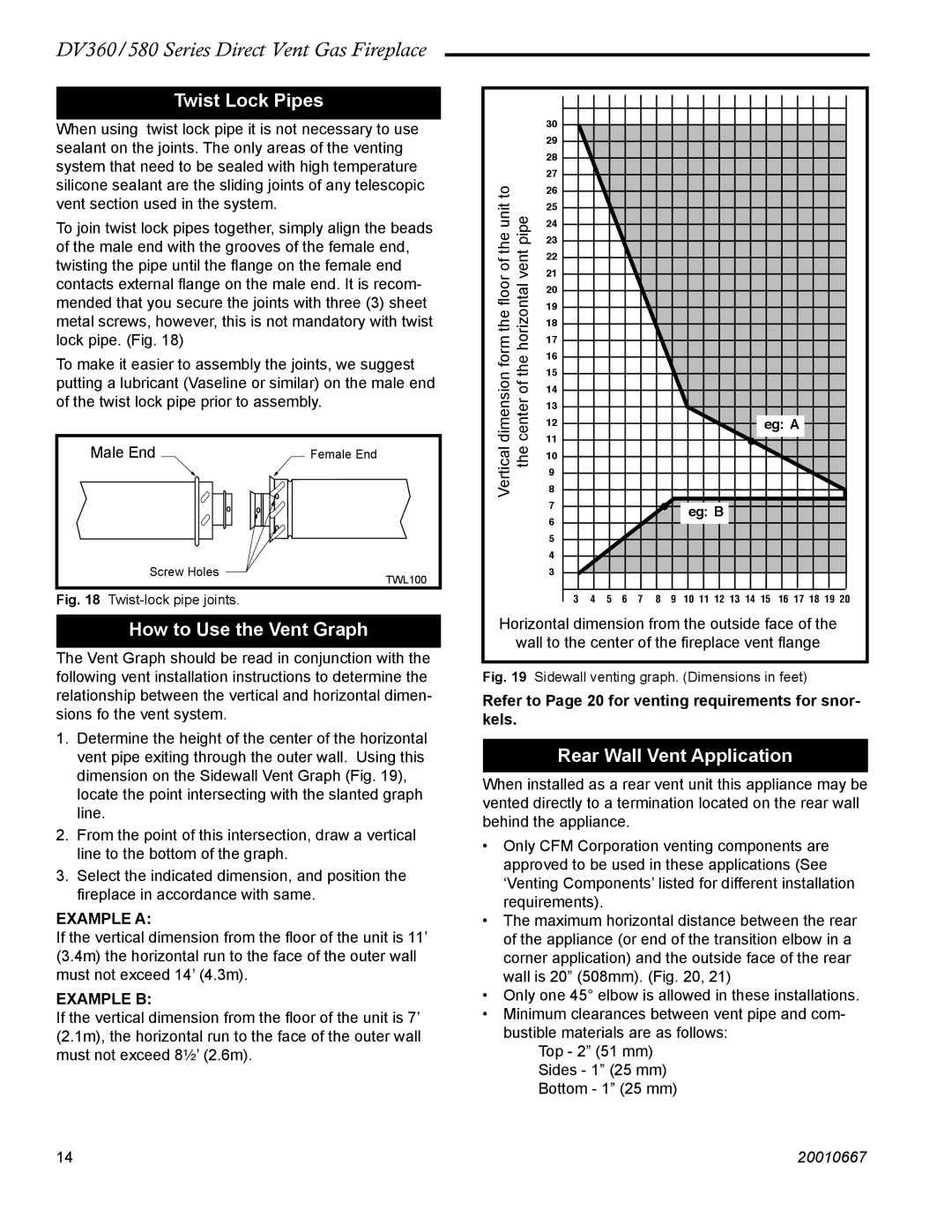DV580 specifications
The Vermont Casting DV580 is a remarkable direct vent gas fireplace that combines modern technology with the timeless craftsmanship that Vermont Castings is renowned for. This fireplace offers an exceptional combination of efficiency, style, and function, making it an ideal choice for homeowners seeking both aesthetic appeal and comfortable warmth.One of the most significant features of the DV580 is its impressive heating capacity. With a maximum output of 33,000 BTUs, it is capable of heating spaces up to 1,800 square feet, depending on the layout of the home. This means you can enjoy consistent warmth throughout your living space, even during the coldest winter months.
Another notable characteristic is its direct vent technology, which allows for safe and efficient operation. The DV580 draws air from outside and expels combustion gases directly outdoors, minimizing indoor air pollution and ensuring optimal combustion. This design not only improves energy efficiency but also contributes to a healthier indoor environment.
The aesthetic appeal of the DV580 is enhanced by its large viewing area, which presents a beautiful flame display. The fireplace features a realistic log set that captures the look of a traditional wood-burning fire, complemented by a variety of decorative trim options. Available in both a traditional and contemporary design, the DV580 can seamlessly integrate into diverse home styles.
Vermont Castings also prioritizes user-friendliness with the DV580. An intuitive control panel allows for easy adjustments to the flame height and heat output, ensuring that homeowners can customize their experience. Additionally, an optional remote control offers added convenience, allowing users to manage the fireplace from the comfort of their seating area.
Durability is another hallmark of the DV580. Constructed from high-quality materials, it is designed to withstand the test of time. The unit is backed by a solid warranty, reflecting the manufacturer’s confidence in its reliability and performance.
In summary, the Vermont Casting DV580 is a premier gas fireplace that beautifully marries form and function. With its efficient heating capabilities, direct vent technology, stunning aesthetic options, and user-centric features, it stands out as a top choice for those looking to elevate their living space while enjoying the cozy warmth of a fireplace.

